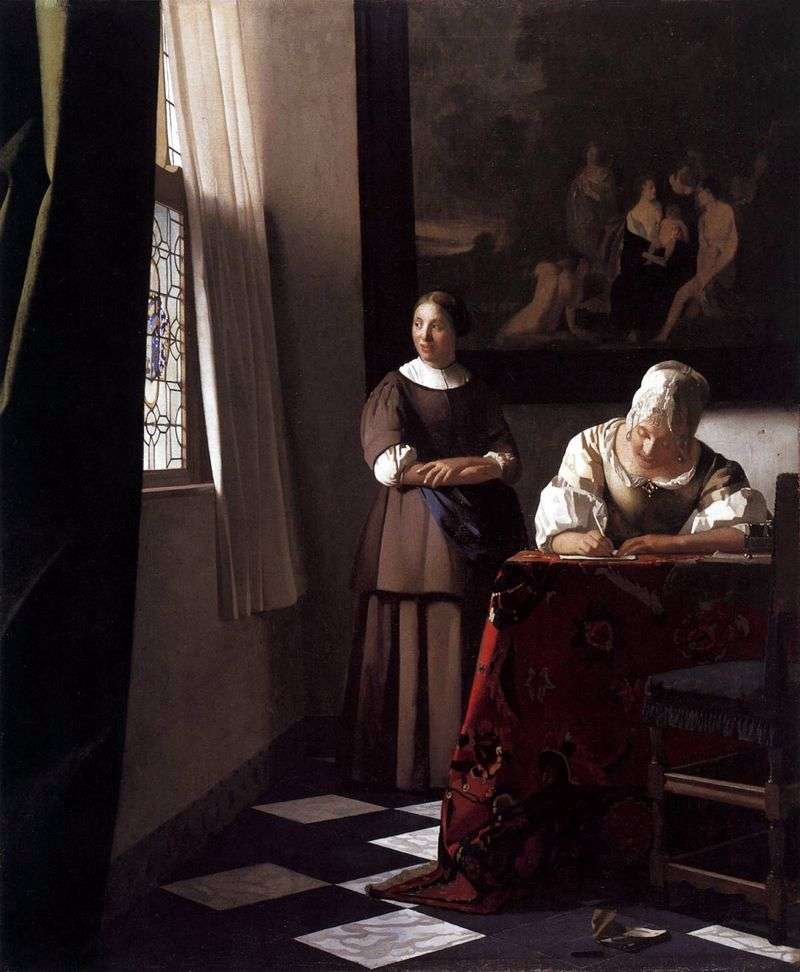
Painting of the Dutch artist Jan Vermeer of Delft “The reply message”. The size of the picture is 72 x 60 cm, canvas, oil. A woman in a pale green dress with white sleeves, in a white cap and with almost obligatory Vermeer pearl earrings sits at the edge of a table covered with an oriental carpet. Light falls from the high window, located on the left side of the picture.
In the back of the room, between the table and the window, there is a maid. On her modest gray dress with a blue apron, her muffled tan testifies that she spends a lot of time outside the house. She crosses her arms and looks out the window. The figure of the servant symbolizes a quiet expectation. The hostess is completely absorbed in the letter. A green curtain, black and white floor tiles and a picture in a black frame on the back wall emphasize the elegance of the interior.
This painting “The Finding of Moses”, according to some researchers, belongs to the brush of Sir Peter Lily. Transparent white fabric covers part of the stained glass window. The lower leaf behind it is closed. The combination of white color spots forms a closed triangle – from the window through the white collar of the maid’s dress – to the white cap and the sleeves of the hostess’s dress – to the white floor tiles – again to the white curtain of the window. As in other works of Vermeer, the composition is rigorously verified. For example, the distance from the bottom edge of the picture to the table is the same as from the top edge of the picture to the bottom edge of the frame “Finding Moses.”
Small details add dynamism to the composition. On the floor at the foot of the chair lies a wax, a bright red seal for letters and a few sheets of paper, which I consider various researchers to be either an open letter, which probably was just received, or a small book. In the 17th century, letters were usually put in small envelopes or wrapped in a separate sheet of paper, fastened with a wax seal. But sometimes, especially if the message was sent with a servant, the letter could simply be folded and tied with tape. The fact that these objects are thrown on the floor, gives haste, with which the mistress of the house began to write.
The chair in the foreground also gives out the recent presence of the third person in the room. Usually in a Dutch house chairs that were not used right now were placed along the walls. A neat maid would most likely put the chair in its place and picked up a letter and a stamp with wax from the floor, if it were not given the order to “urgently wait” for the answer.
